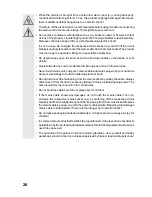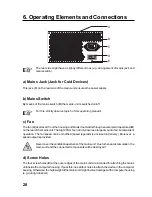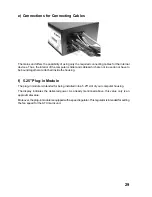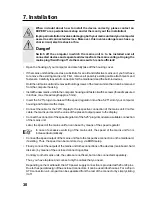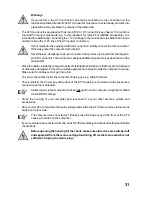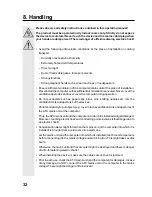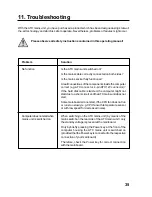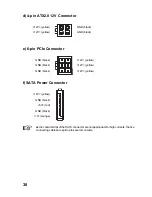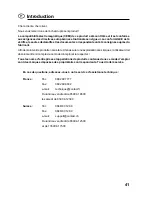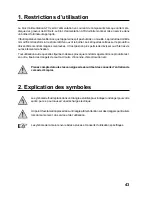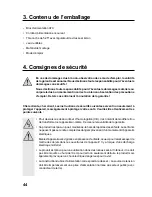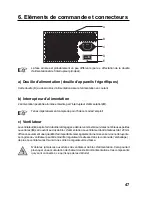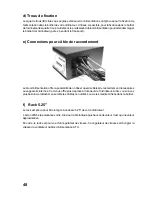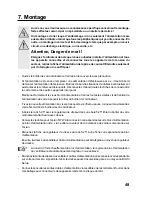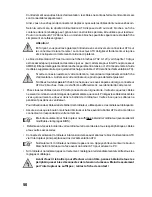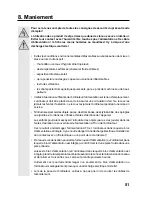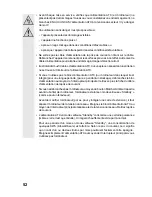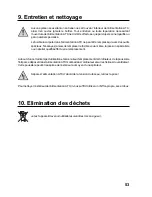
39
14. Tips & Notes
• As already mentioned, the mains unit is in “standby” mode after being switched off by means of
the Power key of the ATX housing.
Therefore, it is not separated from the mains voltage! It works like e.g. a TV set which can be set
to “standby” mode by means of the remote control.
In “standby” mode, the ATX mains unit still draws current. To save energy, switch off the ATX
mains unit by means of the mains switch, if you do not need your computer.
The same is valid for all other devices connected to the computer such as e.g. monitor, scanner,
loudspeakers etc.
Devices without a “real” mains switch (e.g. many computer speakers, some monitors or all
devices with plug mains unit) can be separated from the mains voltage by means of a multiple
socket with an On/Off switch.
â
The standby current consumption of an entire computer system might easily reach 50W.
After only one day, one kilowatt hour (1 kWh) is “wasted” without any use and has been
converted into heat.
Therefore, the purchasing of a multiple socket with On/Off switch will pay off after one year
already.
â
The joint switching on of all loads (computer, monitor, printer etc.) might involve triggering
of the circuit breaker of the respective current circuit, because the switch-on current is
too high.
If this happens, first switch on the switch of the multiple socket and then switch on the individual
devices one after the other.
For switching off, proceed in reverse order: First switch of the devices, then the multiple socket.
There are also so-called “Power Managers” which allow simple switching on/off of individual
sockets via switches on the front. Such “Power Managers” can be placed e.g. under the monitor.
â
Ink jet printers have to be first switched off via the on/off switch of the printer, before the
mains voltage is switched off e.g. by means of the multiple socket.
Otherwise, the printer cannot bring the printing head into the parking position and the
nozzles of the printing head might dry!
Some printers should always be connected to the mains voltage, because otherwise they
would perform an additional cleaning when the mains voltage is applied again (i.e. when
switched on via the multiple socket). The costs of the useless ink consumption are higher
than the energy saving.
• If your mainboard is equipped with a 4-pin ATX2.0 connection for the +12V voltage (e.g. on most
mainboards for Intel-P4 or AMD64 CPU), connect it to the respective connection of the ATX
mains unit (see chapter 13.d).
The connection is intended for better supply of the switching regulators on the mainboard
(generating current or voltage for the CPU) and for relieve of the +12V line of the ATX power
connector. If the connector is not connected, the mainboard might not start.
Summary of Contents for TWV 500W
Page 79: ...79 ...


